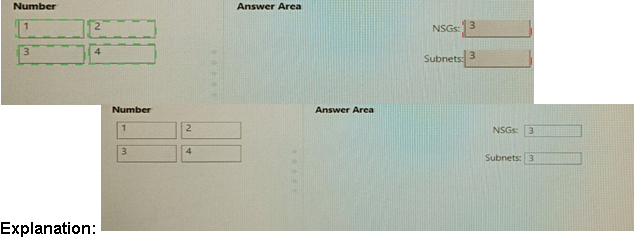
- Email support@dumps4free.com

Topic 2: Misc. Questions
You plan to migrate an on-premises SAP environment to Azure. You need to identity whether any SAP application servers host multiple SAP system identifiers (SlDs). What should you do?
A.
Run SAP HAN A sizing report.
B.
From the SAP EarlyWatch Alert report, compare the physical host names to the virtual host names.
C.
Run the SAP Report from ABAPMeter.
D.
From the SAP EarlyWatch Alert report, compare the services to the reference objects
Run the SAP Report from ABAPMeter.
You have an on-premises third-party enterprise resource planning (ERP) system that uses Microsoft SQL Server 2016. You plan to migrate the ERP system to SAP Business Suite on SAP HANA on Azure virtual machines. You need to identify the appropriate sizing for Business Suite on HANA. What should you use?
A.
SAP Quick Sizer for HANA Cloud
B.
SAP Cloud Platform Cockpit
C.
HANA Cockpit
D.
SAP Quick Sizer for HANA
SAP Quick Sizer for HANA Cloud
Explanation:
If a customer runs non-SAP systems, the only way of Sizing the required Hardware for SAP HANA is the Quick-Sizer tool.
HANA-based Cloud Quick Sizer: Please use this version, if the product that you want to size shall run in the Cloud; e.g. SAP S/4HANA Cloud and SAP Data Warehouse Cloud.
Note: This question is part of a series of questions that present the same scenario. Each question in the series contains a unique solution that might meet the stated goals. Some question sets might have more than one correct solution, while others might not have a correct solution. After you answer a question in this section, you will NOT be able to return to it. As a result, these questions will not appear in the review screen. You have an SAP production landscape on-premises and an SAP development landscape on Azure. You deploy a network virtual appliance to act as a firewall between the Azure subnets and the on-premises network. You need to ensure that all traffic is routed through the network virtual appliance. Solution: You create an Azure Traffic Manager profile.
Does this meet the goal?
A.
Yes
B.
No
No
You have an on-premises network and an Azure subscription. You plan to deploy a standard three-tier SAP architecture to a new Azure virtual network. You need to configure network isolation for the virtual network. The solution must meet the following requirements:
• Allow client access from the on-premises network to the presentation servers.
• Only allow the application servers to communicate with the database servers.
• Only allow the presentation servers to access the application servers.
• Block all other inbound traffic.
What is the minimum number of network security groups (NSGs) and subnets required? To answer, drag the appropriate number to the correct targets. Each number may be used once, more than once, or not at all. You may need to drag the split bar between panes or scroll to view content.
NOTE Each correct selection is worth one point.

Answer:

You have an Azure subscription that contains a virtual network named VNET1, an SAP production landscape on Azure, and an SAP non-production landscape on Azure. Both landscapes connect to VNET1. Each landscape contains virtual machines that run the following:
• SAPHANA
• SAP NetWeaver
• Microsoft SQL Server
You need to monitor the landscapes. The solution must minimize costs.
What is the minimum number of required Azure Monitor for SAP Solutions instances?
A.
1
B.
2
C.
3
D.
6
2
| Page 8 out of 44 Pages |
| Previous |